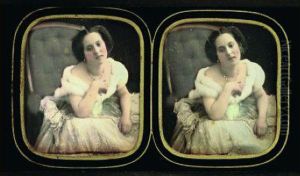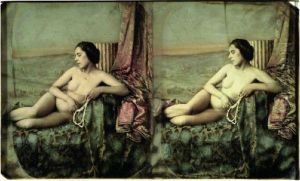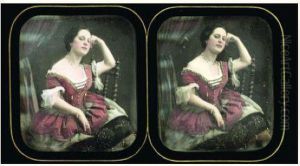Alexis Gouin Paintings
Alexis Gouin was a French painter and lithographer born in 1809, during a period of rich artistic activity in France that set the stage for many of the developments in European art throughout the 19th century. While not as widely recognized as some of his contemporaries, Gouin's work provides an interesting insight into the artistic trends and influences of his time, particularly in the realms of portrait painting and lithography, a technique that was gaining popularity for its ability to reproduce artworks and facilitate their wider distribution.
Gouin's artistic career unfolded against the backdrop of significant historical events, including the July Monarchy, the Second Republic, and the Second Empire in France. These political changes often influenced the themes and styles of French art, as artists responded to the shifting social and political landscape. Gouin, like many artists of his era, was likely influenced by these events, which may have shaped his choice of subjects and his approach to art-making.
Though detailed records of Gouin's life and work are somewhat sparse, it is evident from his surviving works that he had a keen eye for detail and a strong command of the lithographic process. His portraits, whether created in oil or as lithographs, demonstrate a sensitivity to the personality and status of his subjects, reflecting the 19th-century interest in individualism and the human character.
After a career that spanned several decades, Alexis Gouin passed away in 1875. While he may not have achieved the renown of some of his peers, his contributions to French art, especially in the realm of lithography, remain noteworthy. Gouin's works are preserved in some collections and continue to be studied by those interested in the nuances of 19th-century French art and the development of lithography as a pivotal artistic technique.


